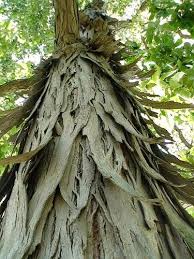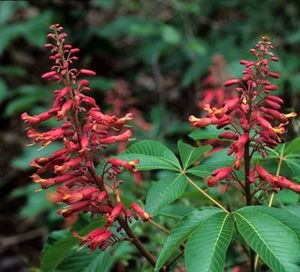Why Native
The easiest way to attract pollinators is to plant a diversity of native plants in the landscape
A variety of native wildflowers and grasses will provide native pollinators with food (nectar, pollen, and / or larval hosts)
Hummingbird and Monarda
Native trees and shrubs will provide shelter, nesting and overwintering habitat as well as providing food for larvae.
Pawpaw
Why is native so important? Native plant species and pollinator species have co-evolved over thousands of years, developing complex relationships with one another.
In North America 80% of our residential landscapes are planted with non-native plants, mostly from Asia.
Boxwood Hedge
Example of the Relationships:
- Oaks (Quercus) hostover 534 species of caterpillars
- Elms (Ulmus) host over 213 species of caterpillars
- Shagbark Hickory (Carya) offers a nursery site for the Indiana Brown Bat (which is an endangered species) and host to 235 species of caterpillar
- Red Buckeye (Aesculus) starts blooming at the same time the Ruby Throated Hummingbird arrives providing a nectar source. Buckeyes are host to 33 species of caterpillar
When non-native plants replace natives such as we a re seeing in suburbia then the entire food web is disrupted by the loss of specialized plant eating insects such as pollinators.
It is predicted that by 2050 more than 70% of the global population will live in cities and suburbs.








